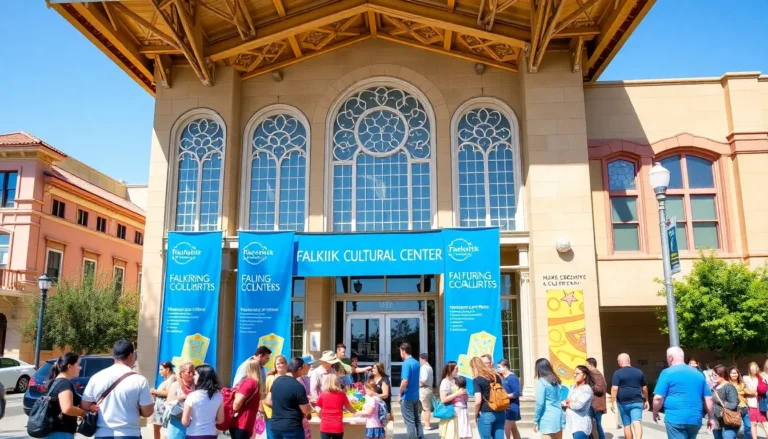Table of Contents
ToggleCultural conflict can often feel like stepping into a debate where everyone speaks a different language, literally and figuratively. It happens when differing cultural values, beliefs, and practices clash, and trust me, it’s not always pretty. Picture this: a wedding where the bride’s family insists on traditional attire while the groom’s family wants to rock jeans and t-shirts. Hilarity (or horror) ensues. But the stakes are often much higher than just a dress code: understanding cultural conflict is vital in our increasingly interconnected world. So, let’s jump into the depths of what it means, how it manifests, and what we can do about it. Buckle up.
Defining Cultural Conflict

Cultural conflict occurs when different cultural systems, beliefs, values, and practices come into opposition. This clash can lead to misunderstandings, frustration, and in severe cases, violence. Imagine two neighbors with contrasting lifestyles, one is a tech-savvy minimalist, while the other is a traditionalist who treasures family heirlooms. Their daily interactions, from property upkeep to social gatherings, highlight their divergent perspectives. Understanding cultural conflict is the first step in addressing it, as it provides the framework for recognizing the unique viewpoints that shape our interactions.
Historical Context of Cultural Conflict
The roots of cultural conflict are as old as humanity itself. Throughout history, societies have wrestled with clashes of culture. Consider the colonization of indigenous lands: it often led to violent confrontations between colonizers and indigenous peoples. Early American history is rife with such conflicts, flavored by European settlers imposed values on Native American tribes. Similarly, the clash of civilizations described by political scientist Samuel Huntington reflects how historical grievances continue to mold contemporary disputes. Looking back, these events inform us that cultural conflicts often stem from power dynamics and can perpetuate waves of discord for generations.
Key Causes of Cultural Conflict
There are several pivotal causes of cultural conflict. One significant factor is ethnocentrism, where individuals perceive their culture as superior, a viewpoint that ignores the richness found in cultural diversity. Competition for resources, whether economic, political, or social, also stirs the pot. When groups feel threatened, be it economically or socially, tensions can escalate rapidly. Also, misinformation perpetuated by media can distort perceptions further, leading to fear and misunderstanding. Eventually, cultural conflict thrives on misunderstanding and is exacerbated in a world that is more connected than ever, leading to a paradox where accessibility breeds division.
Examples of Cultural Conflict in Modern Society
Cultural conflict is not a relic of the past: it manifests prominently in today’s society. Take the ongoing debates surrounding immigration. Nations grapple with integrating newcomers who carry diverse traditions into their societal fabric. These tensions often surface in political rhetoric and social discourse. For instance, in the United States, arguments about immigration reform often spotlight cultural clashes between native-born citizens and immigrant communities, illustrating the friction that can arise from differing beliefs about identity and belonging.
In the realm of business, corporate mergers frequently unveil cultural conflicts. A notable example is the merger between Daimler-Benz and Chrysler in the late 1990s, which was plagued by cultural clashes between German and American work ethics. This incident provides a poignant reminder: recognizing cultural differences is crucial, even in profit-driven endeavors.
Strategies for Resolving Cultural Conflict
Resolving cultural conflict demands a multifaceted approach. Here are some effective strategies:
- Promote Open Dialogue: Fostering environments where individuals can express their perspectives helps bridge gaps. Creating community forums or platforms for discussion encourages understanding.
- Emphasize Common Ground: Highlighting shared values can shift focus from differences to similarities, paving the way for constructive conversations.
- Cultural Exchange Programs: These initiatives provide opportunities for individuals to experience different cultures firsthand, leading to deeper appreciation and empathy.
- Training and Workshops: Providing cross-cultural training in workplaces or educational settings can equip individuals with the skills to navigate cultural complexities.
- Mediation Services: In cases of conflict escalation, neutral mediation can help compromise, ensuring that all parties feel heard and valued.
The Role of Education in Mitigating Cultural Conflict
Education plays a critical role in addressing cultural conflict. By incorporating diverse perspectives into curriculums, schools foster respect and understanding from a young age. Programs emphasizing multicultural education not only teach history but also nurture empathy.
Also, universities often serve as melting pots where students from different backgrounds converge. These institutions can provide safe spaces for dialogue, helping students navigate complex cultural landscapes. Encouraging collaborative projects among students of diverse backgrounds can enhance mutual respect and understanding, eventually reducing the barriers that spark conflict.





